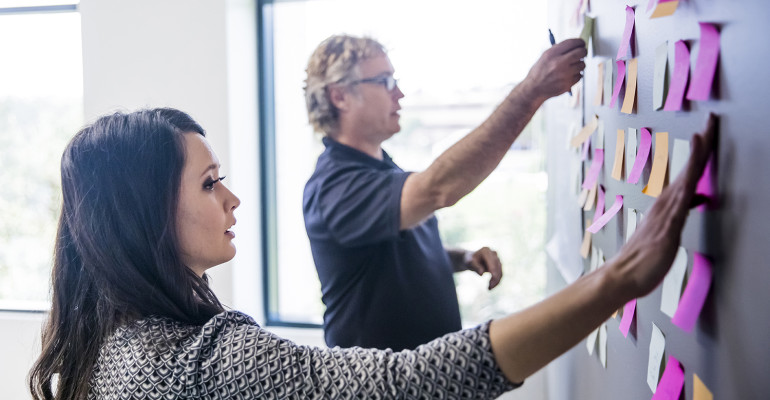A broader understanding of how innovation works
1 June 2020 | Read time: 6 minutes

Building New Zealand's Innovation Capacity Spearhead releases Phase One Insights Report.
Hundreds of SfTI researchers are now well underway with their Phase two projects and a longitudinal study following their progress is yielding valuable insights.
The Building New Zealand’s Innovation Capacity (BNZIC) Spearhead Project is studying the Science for Technological Innovation National Science Challenge through its full ten-year term while reflecting findings across the research community.
For nearly five years, a research team led by Dr Katharina Ruckstuhl and Dr Urs Daellenbach has been studying how SfTI researchers and stakeholders collaborate, through a mix of observation, interviews, quantitative baseline surveys, and qualitative ethnographic approaches.
The team isn’t looking at the quality of the SfTI’s scientific output itself, but rather its relational capacity to drive innovation in the interests of business, Māori and New Zealand in general.
Insights drawn from the research to date can be divided into four categories:
1. Embracing openness
Organisations that seek to acquire and assimilate knowledge beyond their own people and systems tend to be more successful and SfTI embraced open innovation (OI) from the start.
But the team found that a complex interplay of factors influences researchers’ ability to pursue open innovation. These include organisational hierarchies, social networks and the personal cost of seeking out external partners. SfTI’s surveying of businesses reflected findings from MBIE’s own research that 60 percent of New Zealand businesses are not using research partnerships.
Ultimately, an organisation’s ‘absorptive capacity’ to retain and integrate external knowledge, depends on its culture around pursuing open innovation.
“Organisational routines around knowledge help to build the intellectual capital of a firm,
which in turn can support the culture around entrepreneurship and risk taking, which ultimately enhances product development,” the researchers found.
Further adaptation is needed within SfTI research organisations to get the best out of open innovation processes, and that also goes for innovation with Māori. While non-Māori SfTI researchers generally see mātauranga Māori as compatible with mainstream science, they lack the experience and knowledge to use it in their science.
Based on this finding, the researchers have reframed SfTI’s three-pronged capacity approach to align to concepts of Mātauranga, Tikanga and Kaupapa) to better inform meaningful engagement.
2. Advancing Vision Mātauranga (VM)
In the same way, BNZIC researchers have been exploring SfTI scientists’ perceptions of Vision Mātauranga, yielding wide-ranging answers. Again, enthusiasm to incorporate VM into research is evident, though many researchers lack the skills to do so confidently.
“This suggests that developing tikanga (protocols) for science-Māori engagement will be an important task for SfTI’s Capacity Development Programme,” the researchers noted.
Several research projects have benefited from SfTI’s Capacity Development efforts, which have enabled researchers to engage with Māori ideas generated through the Māori community. Exploring how the most fruitful of these collaborations formed and developed, will be a key aspect of the team’s ongoing research.
3. A need for intermediaries
The researchers found that intermediaries, whether organisations like KiwiNet or key individuals, play a crucial role in how science is translated between researchers and those seeking to apply their innovations.
“The research to date suggests this role should not be considered an optional extra,” the BNZIC reported.
Phase two research will explore further how to get the best from intermediaries to facilitate the transfer of knowledge and understanding.
4. Timing is everything
When exactly should researchers and teams start building those science-stakeholder relationships that will serve to see their projects fly and hopefully achieve implementation?
It’s a difficult question to answer, but one that is ultimately integral to the success of SfTI research projects.
Differing roles and the influence of various parties in the early stages of collaborations can have lasting effects. When it comes to supporting Māori participation in the innovation system, the BNZIC team found that engagement was less prevalent in the mid-stages of research projects.
A better understanding of appropriate timing from the point of view of differing actor perspectives will help inform how future research collaborations come together and when exactly key stakeholders should be involved.
Looking outwards
To date BNZIC research has focused on SfTI scientists. Phase 2 will see it broadening its investigation to industry, Māori and early career science and entrepreneur perspectives, and on what leads to successful collaborative engagement from the stakeholder’s perspectives.
In effect, this will give us the full picture of how the innovation ecosystem works and how it can be improved to get the best outcomes for NZ.